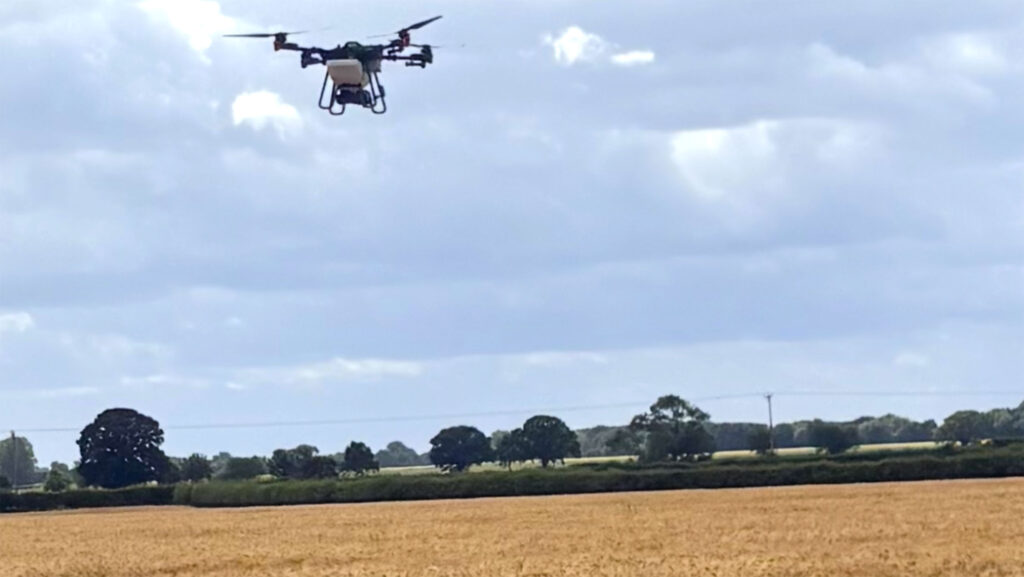Grower uses drone to sow catch crop into standing wheat
 © Simon Blakey
© Simon Blakey An East Yorkshire regen farmer is trialling the establishment of a multispecies catch crop into a standing crop of wheat, using the largest UK spraying and spreading drone.
Jonathon Hodgson farms a 280ha regenerative arable enterprise just three miles from the North Sea coast.
His inspiration to try the drone technique is to generate a bigger catch crop by extending the growing season.
See also: How plant breeding tech will benefit farmers over next decade
He said: “I was really interested in the concept to just see if we could try to gain some time in creating a bigger biomass.”
Mr Hodgson hopes that by spreading a catch crop a couple of weeks pre-harvest he will gain some time in establishing the crop to help enhance soil quality and provide a better structure for the following cash crop.
Due to the recent dry conditions Mr Hodgson decided to spread the multispecies catch crop at a low rate of 7.5kg/ha to try to reduce the loss of seed through the soil cracks.
This was one of the largest concerns with the trial, along with the possibility of seeds getting lodged into the crop and not making it to the ground.
The multispecies catch crop comprised 1kg/ha phacelia, 2kg/ha buckwheat, 4kg/ha oil radish and 0.5kg/ha linseed.
Simon Blakey, managing director at BP Agricultural Services, operated the XAG P100 Pro Drone, which has a maximum take off capacity of 110kg and is the largest spraying and spreading drone in the UK market.
The mix was spun over a 16ha area at a rate of 8ha an hour.
Mr Hodgson plans to follow the multispecies crop with winter beans, which will be drilled directly into the catch crop this coming autumn.
“We will probably then use something like glyphosate to destroy the catch crop post-drilling.”
He has always been interested in the concept of drone spinning and recently discovered BP Agricultural services at a Frontier trials event, where the equipment was being demonstrated.
He then saw the drone again at the recent Groundswell event, where they made a plan to trial the equipment, but was waiting for the right conditions to maximise the success of establishing the catch crop.

